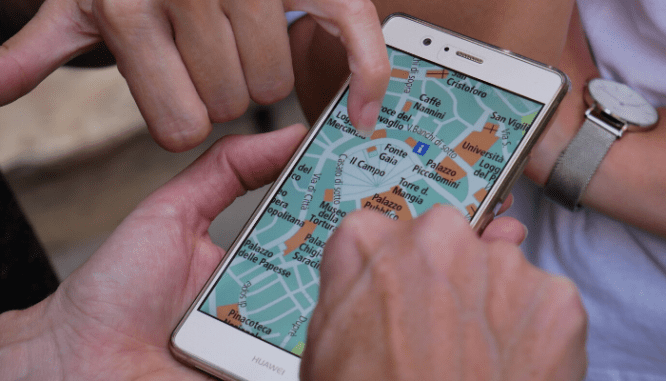You Can Tour a House Without Leaving Your Own Home: Here’s How
- Published on
- 5 min read
-
 Astrid Storey Contributing AuthorClose
Astrid Storey Contributing AuthorClose Astrid Storey Contributing Author
Astrid Storey Contributing AuthorAstrid Storey is originally from Panama and spent most of her early years traveling through Central and South America. She arrived in Denver in 2003, the day after graduating college. During the next decade-and-a-half, she’s juggled a career in a variety of creative and marketing roles while building her own studio, Storey Creative, with clients in real estate, health care, publishing, and tech.
It’s finally spring, usually the “hottest” time of the year to buy a house. And — as our Top Agent Insights Q1 2020 report indicated — even with coronavirus conditions limiting the movement of a majority of Americans, 80% of polled agents found low mortgage interest rates were boosting buyer demand for real estate purchases.
What do you need to know about touring and buying a house without leaving your home? We collected feedback from agents who are helping buyers like you find their dream home, even in global pandemic conditions.

What is allowed and not allowed right now?
Short answer is: it depends on where you live. The New York Times put together this interactive map, which is updated daily with cities and states and their individual regulations.
In addition, each local or state government has decided whether to classify real estate activity as essential or non-essential independent of each other, so it might be helpful to check in with your local government to determine whether real estate agents are allowed to work or not.
Can you tour a house without leaving your home?
Absolutely! There are several ways in which you can tour a listing from the safety of your own home.
A pre-recorded virtual tour is a pre-packaged video that shows the home in a specific order from beginning to end. It can be set to music, or an agent can narrate the home’s most important selling features — but it won’t be tailored to your specific buying needs — so it will have information that is more general to the home.
To access a pre-recorded virtual tour, you will be clicking a link provided to you by the agent that will load on your web browser, or that will download to your computer or smartphone to be viewed locally. You can see an example of a pre-recorded virtual tour here.
With a pre-recorded virtual tour, you can:
- View a highly polished virtual tour of a home
With a pre-recorded virtual tour, you cannot:
- Ask the agent to get closer to an area, re-visit a room, or spend as long as you want in a specific area of the house
- View a room from different points of view
- Get a sense of the home’s location
A 3D interactive virtual tour is a series of 360-degree images taken with a special camera. Like the pre-recorded virtual tour, it means the home has been captured in the past and the video is being shared with you via a direct link.
Unlike a pre-recorded virtual tour, a 3D interactive tour allows you to interact with the images you see and navigate the home in the order you prefer, including revisiting rooms and — in some cases — viewing the rooms from different perspectives and points of view. You can see an example of a 3D interactive virtual tour here.
According to Tom Hall, who’s sold more than 65% more single-family homes than the average Oklahoma City agent, 3D virtual tour platforms have changed the way real estate agents do business and have improved the buying experience. He says, “Gary Vaynerchuck says you have to innovate or die, and I truly believe that staying at the forefront is what will continue to help my clients succeed.”
With a 3D interactive virtual tour, you can:
- Choose the way in which you tour the home
- Get closer to some spots inside a room, re-visit a room, or spend as long as you want in a specific area of the house
- View a room from different points of view — depending on the platform used
- View a floorplan or dollhouse model of the home — depending on the platform used
With a 3D interactive virtual tour, you cannot:
- Ask the agent questions and get answers in real-time
A live virtual tour consists of you meeting your agent virtually via an online meeting app like Google Hangouts, FaceTime, Facebook Messenger, GoToMeeting, or Skype. For Gina Candelario, a top agent in San Antonio for two decades, her tool of choice is Zoom.
Todd Ruckle, a top agent in Delaware, tells you to expect a live virtual tour to go pretty much the same way it would if you were there in person.
“We start at the front door, with a view or panoramic of the front of the house and the street in front of it, and then I walk the buyer through every room in the house, pointing out all the selling features,” he says. He also tries to use furniture or descriptions to explain the scale of the room, and he frequently carries a measuring tape to answer questions about the actual space available.
With a live virtual tour, you can:
- Ask questions and get answers in real-time
- Ask the agent to get closer to an area, re-visit a room or spend as long as you want in a specific area of the house
- View a room from different points of view
“Your agent is also your proxy,” Candelario says.
“We pay attention to things like smells, sounds, and we make sure to verify on-site that the house ticks the must-have items for our buyer.”
After a live virtual tour, it is a best practice to have a conversation with your agent to discuss your feedback on the listing and whether it is worth it to earmark this house for future visits, to discuss it further, or to explore making an offer.
A virtual open house is a live virtual tour where you — and a number of other buyers — have an opportunity to take an online guided tour of a listing. For virtual open houses, Hall prefers to set up a Facebook Watch Party, an online live event that other agents can share on their profiles or pages and with individual lists of friends and followers. The virtual open house concept allows Hall and his agents to feature a listing and answer live questions from the audience.
For a virtual open house, you will probably join a more open session in a platform like Zoom, Google Hangouts, Instagram, or Facebook Live.
With a virtual open house you can:
- Ask questions and get answers in real-time
- Ask the agent to get closer to an area, re-visit a room, or spend as long as you want in a specific area of the house — but your viewing is not private, so the agent might not get to all your questions or requests
- View a room from different points of view

Tech tips for you to keep in mind
Stream the presentation to your TV or desktop
Having the video or meeting on a larger screen really helps you get a feel for the space — better than a smartphone or tablet would.
Make sure you’re running the latest version of the software
Especially true for mobile apps that are frequently updated, the latest version ensures you’re seeing the best the application has to offer.
Connect to your network, not to your phone data provider
The connection is bound to be better, and you will experience better visual and audio quality as well as no lag or packet losses.
Pick an off-peak time for your call
With everyone working at home and competing for data bandwidth, your call will have better quality if you schedule it for off-peak times, such as mid- or late-afternoon instead of 9 a.m.
Beware Zoom bombing
Make sure you and your agent have secured your meeting with a password or a unique meeting URL — or have otherwise ensured no uninvited guests can drop in on your conversation.
Questions to ask
When touring a house without leaving your home, you should always ask your agent these questions or investigate the answers yourself:
- How old is the roof?
- How old are the appliances?
- What’s the maintenance record of the house like?
- Is the location convenient for my specific needs? Consider your lifestyle: is the house close to schools, walkable to shops and dining, close to a highway, in a high-traffic or noisy area?
- Are there any concerning signs that might not come across in the virtual tour? For example, cigarette smells, pet stains, water stains on walls or ceilings, and mold smells or stains.

If you find a house you love, should you make an offer sight unseen?
The answer depends on your agent, your market, and your specific motivations to make an offer. For some of Candelario’s clients, sight unseen is the only way to go. She describes Dallas as “a big military town, and in many instances my clients cannot wait to be relocated to start their home search. They will have one opportunity to visit a home — and sometimes that’s after the offer has already been accepted.”
For Ruckle’s clients, sight unseen is not the norm. “If a client finds a property that is an excellent fit during a virtual tour, we will go through the proper channels to arrange an in-person visit before they put an offer in.”
During pandemic times, this includes only the adult members of the family — maximum of two people — and the agent, as well as personal protective equipment such as gloves, face masks, booties, and copious amounts of hand sanitizer or disinfectant wipes.
“We ask that the sellers leave all the lights on and the interior doors open so we don’t have to touch anything,” Ruckle says.
If you do make an offer sight-unseen, make sure to:
- Ask the seller for a home warranty that covers most large appliances for a period of time after closing.
- Order additional home inspections. Some specialized examples include: chimney inspections, roof inspections, lead paint inspections, pest inspections, radon inspections, electrical inspections, asbestos inspections, mold inspections, water and plumbing inspections, sewer or septic inspections, foundation or structural inspections, as well as a soil analysis.
- Hire a trustworthy agent who has an excellent track record of satisfaction in their transactions.
Happy virtual touring!
Header Image Source: (Sergey Tarasov / Unsplash)
